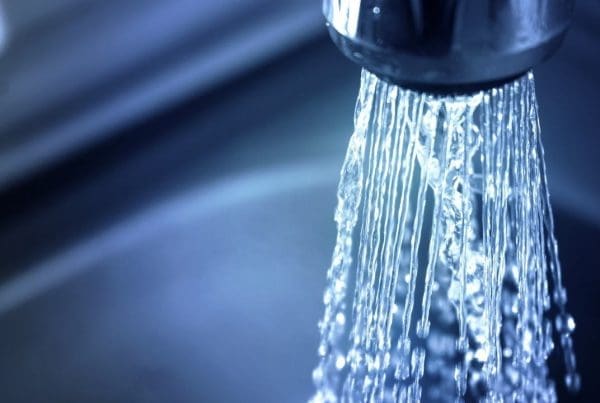It’s sad that we can’t always trust the water we drink. There’s a common saying, “Use a water filter, or you’ll become one.” The idea behind this pithy saying is that unless you filter the contaminants in your water with a filter before it comes out of the tap, they will end up in your body, and your organs will have to deal with them. C&J offers many different types of filters based on your needs. This post will describe the types of filters and give you some guidelines on why and how often they need to be changed.
To filter water properly.
 Be aware that filters can look clean but still be clogged with contaminants that affect taste and odor, so if you notice any changes in taste or smell after replacing your filter with a new one, change it again immediately—be sure to keep track of this. If you don’t see any improvements after replacing your filter again (or if there are no obvious changes), contact a professional to find the problem.
Be aware that filters can look clean but still be clogged with contaminants that affect taste and odor, so if you notice any changes in taste or smell after replacing your filter with a new one, change it again immediately—be sure to keep track of this. If you don’t see any improvements after replacing your filter again (or if there are no obvious changes), contact a professional to find the problem.
Many contaminants can get into our water supply. If you have a filter installed on your tap, it will only work for a short time if you consistently change its filters. Let’s look at the most common types of filters and when they should be replaced.
What are the most common types of water filters?
Sediment filter—A sediment filter is a replacement cartridge that removes large particles from the water supply to protect other water treatment equipment. Usually, you should change your sediment filter every six months to one year. More frequent changes might be required if there is more than typical sediment in your water well.
Reverse Osmosis—A filtration system that removes dissolved solids, organic and inorganic forms, that a water softener cannot. RO removes metals like arsenic, aluminum, copper, lead, chromium, and many others. It also removes inorganic forms such as nitrates, phosphates, chlorides, sulfates, and more. RO forces water from your home’s supply through the RO membrane. This membrane contains thousands of tiny holes, just large enough to allow water molecules to pass through. Anything bigger than a water molecule is trapped and cannot fit through the membrane. C&J offers a 4-stage RO unit with a sediment filter, an activated carbon block prefilter, an RO membrane, and a polishing filter that removes residual tastes and odors. We recommend the sediment, carbon, and polishing filters be changed at least annually and the RO membrane approximately every five years.
Air Induction Oxidation Filter—If you have higher-than-normal concentrations of iron, manganese, or sulfur in your water, you may need an air induction oxidation unit (AIO). AIO filters remove both clear water iron and ferric iron (rust). The AIO valve uses a unique process to create an air bubble at the upper portion of the tank to oxidize any ferrous iron before being filtered by the media. Our main purpose for this unit is to remove low concentrations of dissolved hydrogen sulfide and manganese from water. This media typically needs to be replaced every 5-7 years, depending on water usage.
Ultraviolet Light—While it’s not a filter, per se, ultraviolet light will mitigate bacteria in your water. UV is a disinfection method using Ultra Violet Rays, and it deactivates the DNA of undesired pathogens such as E. coli, coliform, cryptosporidium, giardia, fecal bacteria, etc. This is done by a UV bulb that is recommended to be replaced annually.
Improve the taste of water
You can expect to improve the taste of your tap water by choosing a filter that completely removes chlorine. Chlorine is added to municipal water supplies to kill bacteria and other substances which may otherwise cause illness or damage equipment. However, many people find that it has an unpleasant smell and taste when consumed alone (or even in combination with other sources of drinking water). Filters that eliminate chlorine will also help produce better-tasting tea, coffee, and other beverages from your filtered water supply.
Another way that filters improve the flavor of tap water is by removing bad odors or tastes caused by minerals dissolved in it. Most mineral deposits give off a bitter or metallic taste when consumed—one reason municipal water supplies need to be treated with chemicals like chlorine before being distributed throughout cities.
Get rid of harmful contaminants

The average American family of 4 uses about 400 gallons of water daily. Most water flows through showerheads, faucets, toilets, and washing machines. It also passes through a home’s drinking water system, where it may pick up contaminants. A filter at home can remove these substances from your tap water—but only if it’s changed regularly. If you live in an area with higher levels of contaminants (like chloramine), or if you use your filtered water for cooking or drinking more frequently than others, then changing the filters more often may be necessary.
Consistently replacing your water filters can ensure that the water you drink is contaminant-free and tastes good.
When you consistently replace your water filter, choosing a product that is right for you is important. Don’t worry about the cost of replacement filters—plenty of high-quality options are available at reasonable prices. These filters will remove harmful contaminants from your water and improve its taste so that it tastes better than bottled water!
You should always replace your water filters promptly. This keeps the water you drink safe and delicious. Water filtration is a simple way to support your health. Contact us today for more information!




